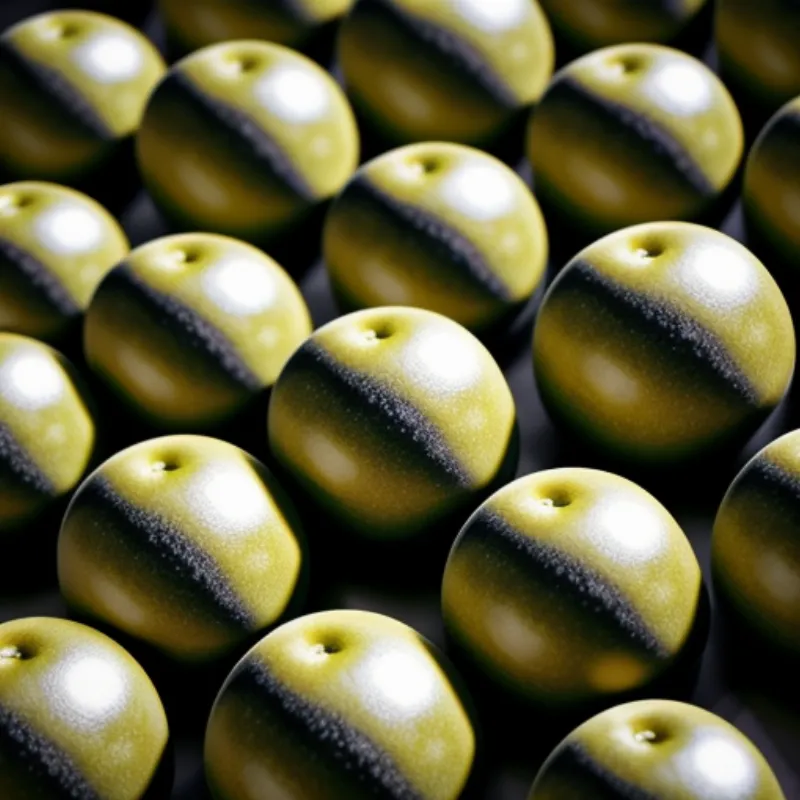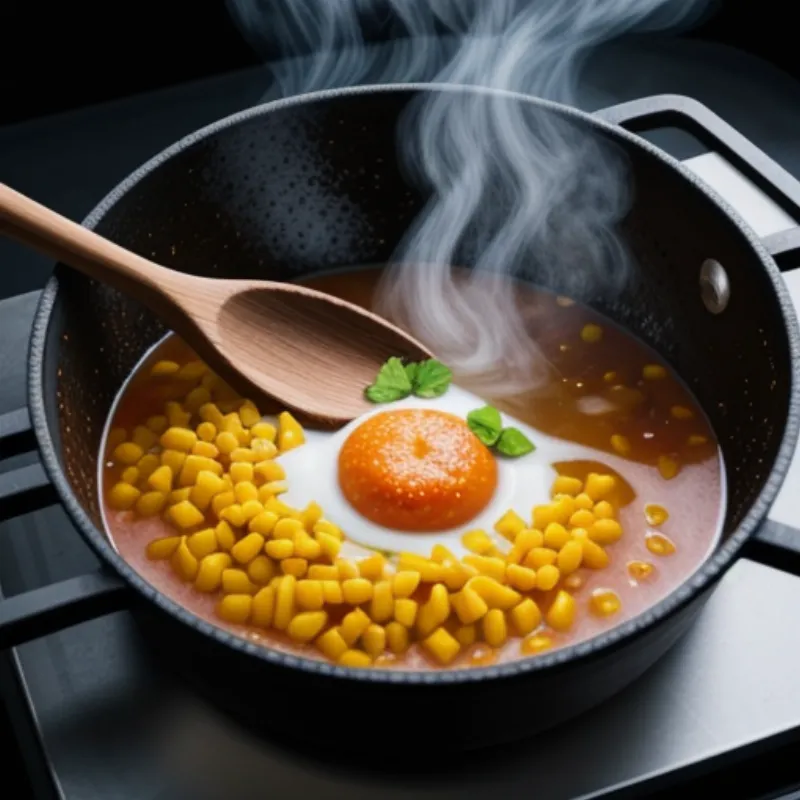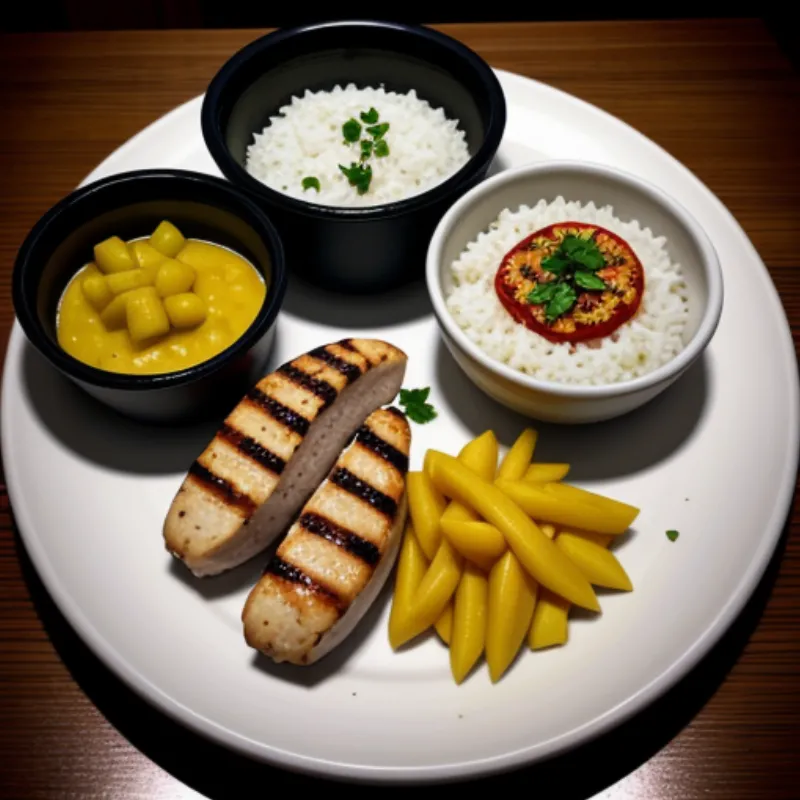Sambal Mangga, a vibrant Indonesian condiment, offers an explosion of flavor with every bite. This unripe mango salsa combines the sweetness of tropical fruit with the fiery kick of chilies, creating a harmonious dance of flavors that will tantalize your taste buds. Whether you’re a seasoned foodie or an adventurous home cook, this recipe is easy to follow and guarantees a burst of authentic Indonesian flair in your kitchen.
Gather Your Ingredients
Before we embark on this culinary journey, let’s gather our ingredients. You’ll be surprised at how readily available they are, making Sambal Mangga an accessible taste of the tropics.
Main Ingredients:
- 2 unripe mangoes, peeled and diced
- 1/2 cup red onion, thinly sliced
- 1/4 cup red chili peppers, finely chopped (adjust to your spice preference)
- 1/4 cup bird’s eye chilies, finely chopped (optional, for extra heat)
Flavor Enhancers:
- 2 tablespoons palm sugar, grated (can substitute with brown sugar)
- 1 teaspoon shrimp paste (optional, for a more savory depth)
- 1/2 teaspoon salt, or to taste
- 1/4 cup water
“Choosing the right mango is crucial for Sambal Mangga,” says Chef Maya, a renowned Indonesian cuisine expert. “Opt for firm, unripe mangoes for a perfect balance of sweet and tart flavors.”
 Unripe mangoes for Sambal Mangga
Unripe mangoes for Sambal Mangga
Equipment You’ll Need:
- Cutting board
- Sharp knife
- Mortar and pestle (or food processor)
- Small saucepan
Let’s Make Sambal Mangga!
-
Prepare the Mangoes: Rinse and peel the unripe mangoes. Dice them into small pieces, about 1/4 inch in size.
-
Combine and Crush: In a mortar and pestle, add the chopped red onion, chilies, and a pinch of salt. Crush until they form a coarse paste. If you prefer a smoother consistency, use a food processor, pulsing until finely chopped.
-
Caramelize the Sugar: In a small saucepan over medium heat, melt the palm sugar with the water. Stir constantly until the sugar dissolves and forms a light syrup. This caramelized sweetness will add a beautiful depth to the sambal.
-
Bring It All Together: Add the diced mangoes, chili paste, and shrimp paste (if using) to the saucepan with the melted palm sugar. Stir well and cook for about 5-7 minutes, allowing the flavors to meld and the mango to slightly soften.
-
Adjust and Simmer: Taste and adjust the seasoning as needed, adding more salt or sugar to your preference. Reduce the heat to low and let the sambal simmer for another 2-3 minutes.
 Cooking Sambal Mangga in a saucepan
Cooking Sambal Mangga in a saucepan
Tips and Tricks for Sambal Success:
-
Spice Level: Adjust the amount of chili peppers to your liking. Remember, you can always add more heat but can’t take it away once it’s in!
-
Mango Substitution: While unripe mangoes are traditional, you can experiment with other green fruits like green papaya or pineapple for a unique twist.
-
Shrimp Paste Power: A little goes a long way with shrimp paste. Its pungent aroma adds a savory umami kick to the sambal.
-
Time Saver: Short on time? A food processor can be used to chop the ingredients, but the traditional mortar and pestle will give you a more authentic texture.
Serving and Enjoying Your Sambal Mangga:
-
Classic Accompaniment: Sambal Mangga is traditionally served as a condiment with various Indonesian dishes like grilled fish, chicken satay, or nasi goreng (fried rice).
-
Creative Pairings: Don’t be afraid to get adventurous! Its sweet, spicy, and tangy notes also complement grilled tofu, tacos, or even as a topping for burgers.
 Sambal Mangga served with grilled chicken and rice
Sambal Mangga served with grilled chicken and rice
Storing Your Spicy-Sweet Creation:
Store any leftover sambal in an airtight container in the refrigerator for up to 5 days. The flavors will continue to develop and deepen over time.
The Final Bite:
Making your own Sambal Mangga is a rewarding experience that brings the vibrant flavors of Indonesia to your table. This recipe is a stepping stone to exploring the diverse world of sambals, each with its unique character and charm. So, grab your ingredients and embark on a culinary adventure that will leave your taste buds singing! We encourage you to share your Sambal Mangga adventures, variations, and pairing discoveries in the comments below. Happy cooking!
